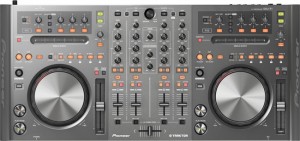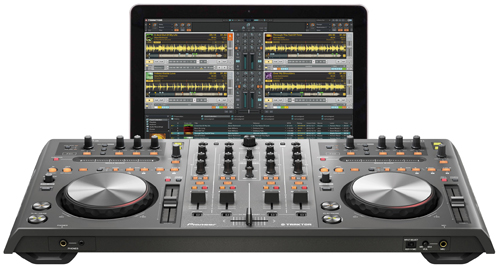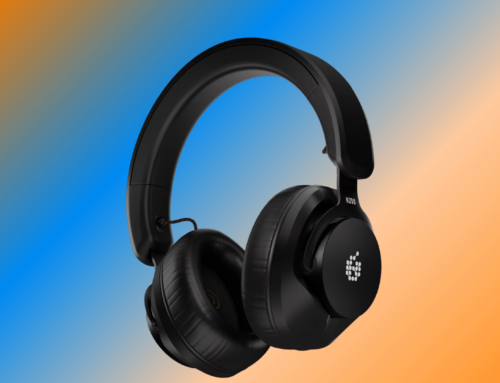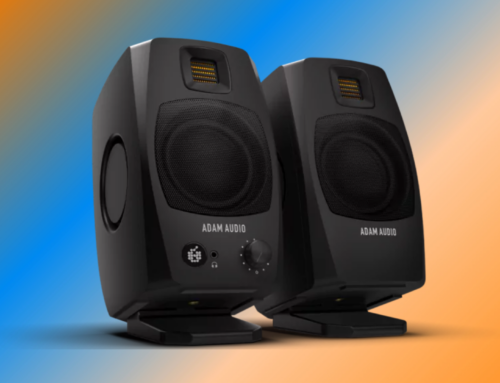 Pioneer’s Pro DJ line has built a solid reputation on well-designed, high quality equipment, and in particular its CDJ line has earned its place in that most worn of marketing catchphrases, the Industry Standard. For years they’ve been the choice of many of the world’s biggest clubs and, it follows, the studios and bedrooms of the performers who play, or aspire to play in them.
Pioneer’s Pro DJ line has built a solid reputation on well-designed, high quality equipment, and in particular its CDJ line has earned its place in that most worn of marketing catchphrases, the Industry Standard. For years they’ve been the choice of many of the world’s biggest clubs and, it follows, the studios and bedrooms of the performers who play, or aspire to play in them.
This year Pioneer released two new controllers in their trademark styling, built to integrate with the stalwarts of the digital DJ’s software arsenal: Native Instruments’ Traktor and Rane’s Serato. The Traktor unit is called the DDJ-T1, and we peer through the hype for a closer look.
The T1 comprises two deck controllers astride a four-channel mixer. At nearly 27″ by 12.5″ it’s a sizeable unit – fitted gig bags are hitting the market now – but offers a neat, streamlined interface without sacrificing the clearance required for actually usable controls. That’s no mean feat and Pioneer pull it off by assigning multiple parameters to relatively few physical controls. Not everybody’s going to like this approach – it means becoming fluid in a whole new range of modifier keys – but I found it to provide an easy, smooth workflow within a pretty short amount of time.
Let’s start on the mixer. It’s fairly basic and more or less as you’d expect: four channel faders and a cross-fader, dedicated gain and EQ dials (although, sadly, no EQ kills), main and cue volume/mix controls and at the top, a simple browser section that offers, via only a handful of multi-purpose buttons and one big, grabbable knob, easy access to the deepest, darkest nooks of your virtual crate.
Each channel also has its own Sync and Master buttons, on/off toggles for the two effects chains you’ll assign in the decks, and a nifty Channel Fader Start switch that, when enabled, cues that deck when the volume fader reaches zero, and starts playing at a non-zero value.
The mixer also includes a four channel audio interface that sounds, it must be said, fantastic. There are mic and auxiliary inputs, each with their own gain control, on the front and back sides of the unit, respectively. The T1 is bus powered but these two inputs will only work when you’re connected to a DC power source – thankfully Pioneer have included not only the power supply, but five international socket connections that most of us mere mortals will never need. While there are balanced and unbalanced outputs, there are no XLR or booth outs, which undermines the unit’s professional ambitions and reminds us that the T1 is, really, not intended to replace the house system, but is aimed at the bedroom banger or semi-pro wanting to practice on familiar equipment.

Onto the decks themselves, then. Each contains your standard platter, tempo slider and key lock and tempo range controls, as well as Cue and Play buttons lifted directly from the CDJ production line. The plattertop itself, used for scratching and spooling, is separate from the outer ring, which handles tempo adjustments, so each platter actually presents two controls. To me, they leave a little to be desired. At 4.5″ they’re bigger than any competing unit right now but still considerably smaller than most CDJs. In itself this is no big deal; the bigger problem is that they don’t feel as well implemented as the rest of the controls. It’s a matter of personal taste, sure, but to me these were a little light, a little free and not quite rigid enough; just not quite there. For scratching, the platters are just about useless, sadly, but then if you’re serious about scratching you’re using NI’s TimeCode vinyl and Scratch Pro 2 – not these.
Above the platter is the cue and looping section. With the Shift and Mode modifiers, each control here has multiple uses and, while it’s not as intuitive as, say, that fundamental concept of pushing the big circle to nudge time, it’s another clever use of a few controls in a confined space, giving maximal productivity. The Auto Loop encoder, which snaps with gratifying crispness at each increment, controls the state and length of the loop, adjusts the beat grid and changes the cue type. The buttons in this section are used variously to select loop (in or out) or cue points, move them, beat jump and move the playhead within the loop. Assigning so many functions to so few controls can mean some headaches while you’re still on the learning curve, but it’s actually a pretty simple tool to master and – the most important thing – it will help you juggle your cues and loops on the fly in new and more creative ways. That’s a big win.
Above this is what Pioneer is calling the Needle, a horizontal touch ribbon whose default behaviour is to scan quickly through the length of the whole of whichever track you have selected. Like just about everything else, the Needle is assignable, though, so if you’d prefer to use it as a dry/wet for your effects chain, you can. There’s also a dedicated filter knob which activates Traktor’s internal high- or low-pass filters depending which side of zero you take it, and a pair of buttons that switch the left deck’s controls between Traktor’s decks A and C, and the right between B and D. Four deck management, then, is quite simple – you just have to be careful that you don’t need your hands on decks A and C at the same time.
The upper section of each deck is dedicated to the effects. The layout is based on Traktor’s own effects section and so should be pretty familiar, and again it’s a good example of multiple functions spread across a few controls. There’s a toggle to switch between Chained and Advanced mode (Chained mode lets you chain three effects together; Advanced mode gives you more control over a single effect), a global kill button and dry/wet knob, three buttons used as a basic effects browser, then three more knobs and buttons that function, in Chained mode, as dry/wet and kills for individual effects, or in Advanced mode as controls for individual parameters of a single effect. The beauty here is that you can switch between the modes on the fly, so you can easily set each effect’s parameters just the way you want them before chaining them together and controlling them globally. I personally would have liked more options to tweak, but then it’s fair to say that I’ve been spoiled by Ableton, where every tiny useless parameter is mapped for hands on control. It’s also worth pointing out that Advanced mode doesn’t function with the included version of LE, which sucks, but given that many people forking out for a unit like this will be happy to upgrade, that makes sense and it’s a good thing that they’re catered for in advance.
Overall, the build quality is great but not flawless. The T1 feels tough but a little brittle alongside the rubberised masochism of some other controllers on the market right now, and gives the impression that only a moderate bashing might start causing problems below the surface. I might be wrong – but there’s only one way to test this kind of durability and the T1 never pissed me off enough to seduce me into trying. The buttons are a hard plastic, not the lighted rubber favored by, for instance, Native Instruments themselves, and are clean and responsive; it’s easy to time your button presses sharply (not that you need to worry about it, most of the time, with Traktor’s timing engine) with confidence.
The T1’s underside features a wide, recessed middle section so it will straddle your laptop, leaving the screen poking out at the top. The T1’s own inputs and outputs are all at the corners, so your cables won’t obscure any of the screen. This is a nice, simple touch and with your crate properly organised you shouldn’t need your keyboard – the T1’s browser can get you to your Favorites, your iTunes library, your history and the rest. Our unit was tested on a 17″ Macbook Pro with cables sticking out of just about every port, and the T1 sat snug and rock solid over the top with ease.

Installation is as easy as plugging it in and switching it on – Traktor will recognise it out of the box, just start the software and you’re good to go. You also get a slick little lightshow on power-up. You can’t get into Traktor’s preferences with the controller and there are a couple of minor points you’ll want to set up before you start performing – your MIDI clock, for example – but once you’ve saved your settings you should be ready to go. And if you don’t like the way a feature is integrated, you can change it: basically everything on the T1 is MIDI assignable.
It ships with a manufacturer’s edition of Traktor LE that contains all the mappings automatically, but I gave it a whirl in Traktor Pro 2 and everything still lined up perfectly, although there are no dedicated controls for TP2’s new Sample Decks, and not much in the way of official advice about software support for upcoming versions. The timing of TP2’s release feels a bit unfortunate for Pioneer, who are in all likelihood scrambling around trying to figure out when and how to release a DDJ-T2. It will be interesting to see how this pans out; for now all we know is that the T1 will work with TP2, and that the Pioneer edition of LE2 is due to drop in July.
At $1,299 MSRP, the T1 is more expensive than Native Instruments’ own S4, and doesn’t have onboard VU meters or dedicated controls for Traktor Pro 2’s new features. So is it worth it? I make the point that, with a solid laptop and a good selection of MP3s, this unit can replace not only your decks but your (basic) mixer, as well as giving you fine control over Traktor’s array of features and a good selection of quality effects. And Pioneer is right: the T1’s layout is modelled on equipment found in clubs all over the world and will be an easy conversion for DJs already familiar with the CDJs. The whole point of the T1 is that you really only need two bits of gear and you’re ready to play, so the question is – how much is that worth to you?




